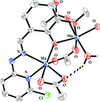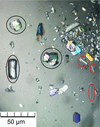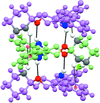issue contents
March 2020 issue

Cover illustration: Chemists of the late 19th century, including Alfred Werner, prepared salts containing either green or violet cations of composition [CoCl2(en)2]+ (en is ethylenediamine); we now refer to these as trans-dichloro and cis-dichloro species. We have discovered a third salt, purple in color, containing cations of the same elemental composition and whose asymmetric unit composition is [CoCl2(en)2]2Cl2·3H2O. See Lalancette & Bernal [Acta Cryst. (2020), C76, 298-301].
research papers








 access
access



 access
access











addenda and errata



 journal menu
journal menu































